Notes
Importance of Seeing the Trauma: The Video of Diamond Reynolds and Daughter in Back of a Police Car
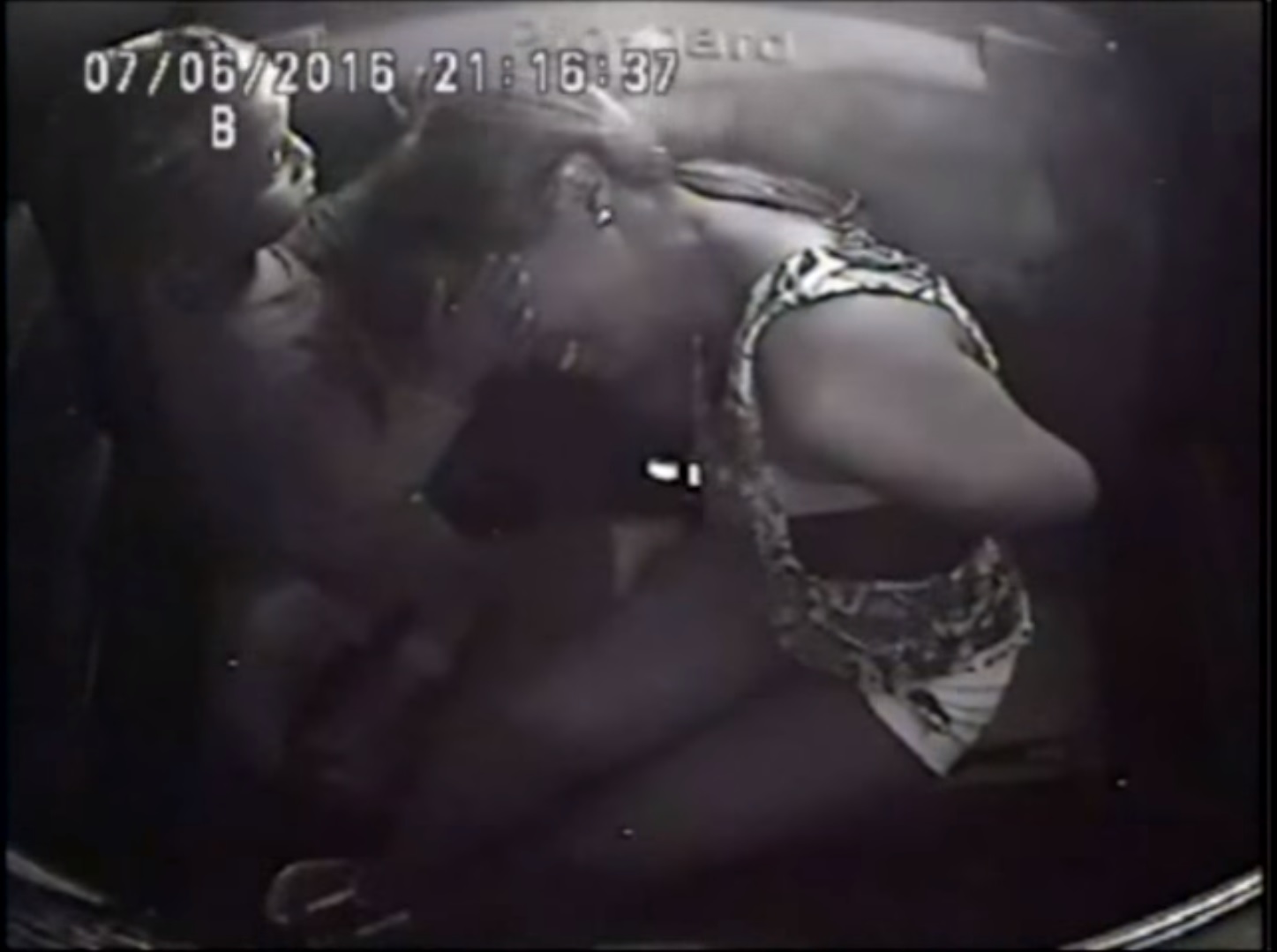
Fig. 1
The Minnesota Bureau of Criminal Apprehension recently released a two-minute video of a four-year old African American girl in the back of a police cruiser attempting to comfort her handcuffed mother, Diamond Reynolds. This still shows the daughter with one hand on her mother’s forehead and another stroking her hair. Throughout the video, they attempt to comfort and calm one another in turn. At one point, the little girl pleads: “Mom, please stop cussing and screaming ’cause I don’t want you to get shooted.”
The blurry black and white film creates a “live-action” documentary feel while the time code in the upper left corner reminds the viewer of the camera’s role as a tool of surveillance. A persistent condition for African Americans, Reynolds and her daughter are here caught on camera as objects of the police gaze. This gaze from above also inserts the viewer into a scene of intimate violence – wherein a young child witnesses both the trauma of her father’s death and the humiliation of her mother. Just moments earlier, the pair had witnessed the shooting of the girl’s father, the mother’s boyfriend, Philando Castile. This July 2016 case attracted national attention in part because Reynolds recorded and livestreamed her interactions with the police officer, Jeronimo Yanez, in the immediate aftermath of the shooting.
The video begins inside their car, inches from Castile’s bloodied body, as Reynolds calmly tells her Facebook audience that they had been pulled over for a “busted tail light” when the officer shot and killed her boyfriend. She explains that Castile had been carrying a gun, legally, and surmises that the officer reacted to the sight of the weapon. Even as the officer yells hoarsely at her while pointing his gun into the car, Reynolds attempts to de-escalate the situation and continues her narration.
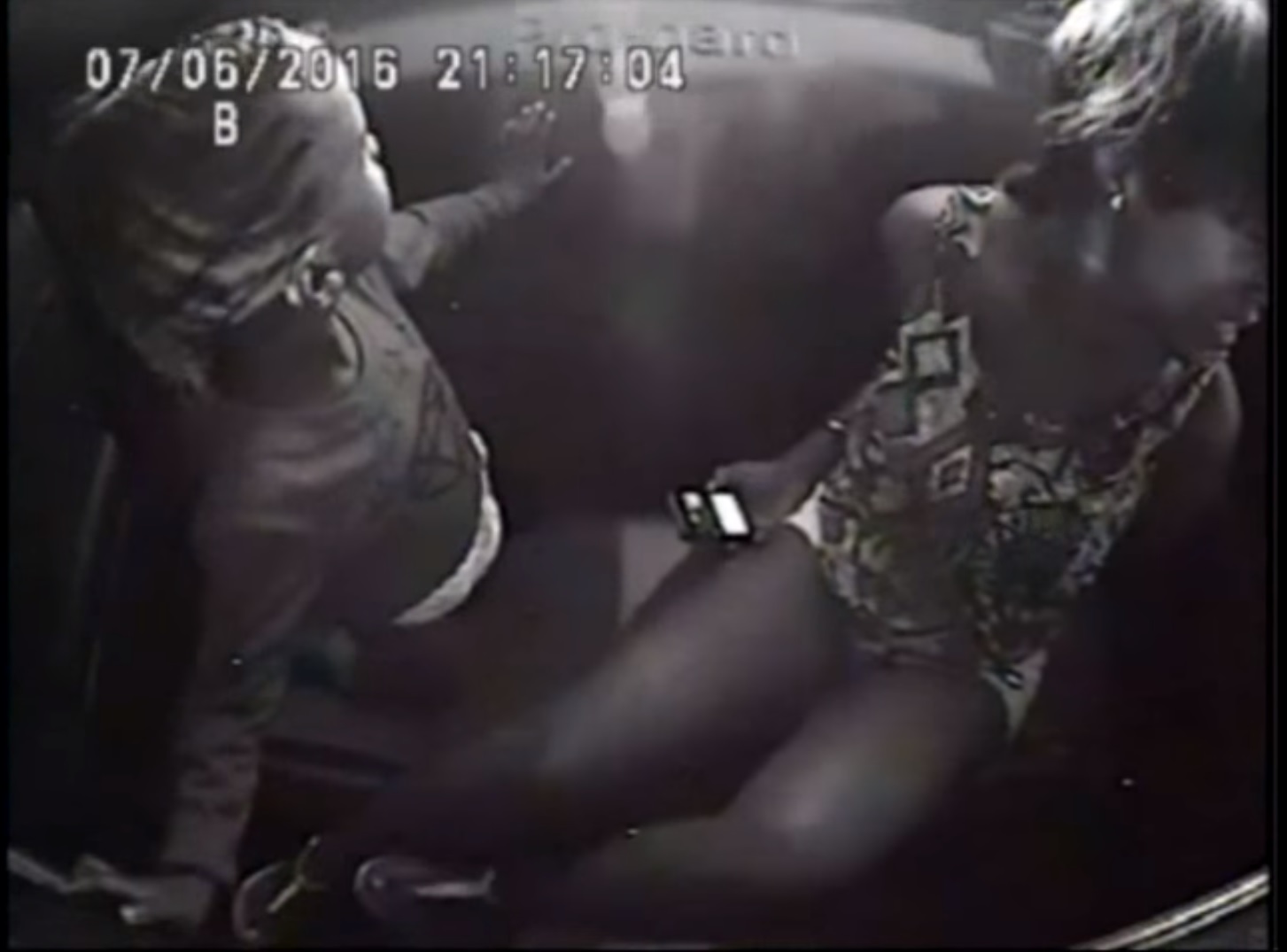
Fig. 2
Racial profiling in this country has led inexorably towards violent encounters between the state and young black men. Although profiling of African American women attracts less attention in popular media, this newly released video demonstrates how police actions also target them.
In this second still, the daughter appears to be moving toward her mother, who holds a phone in a handcuffed hand while turned away in apparent distress. By contrast, the unseen police do not extend any sympathy to Reynolds, and only express perfunctory concern for her physical condition. Instead, they handcuffed her, effectively prohibiting her from calling family members or holding her child, and kept her and her daughter in the car for 45 minutes before driving them to the station for questioning.
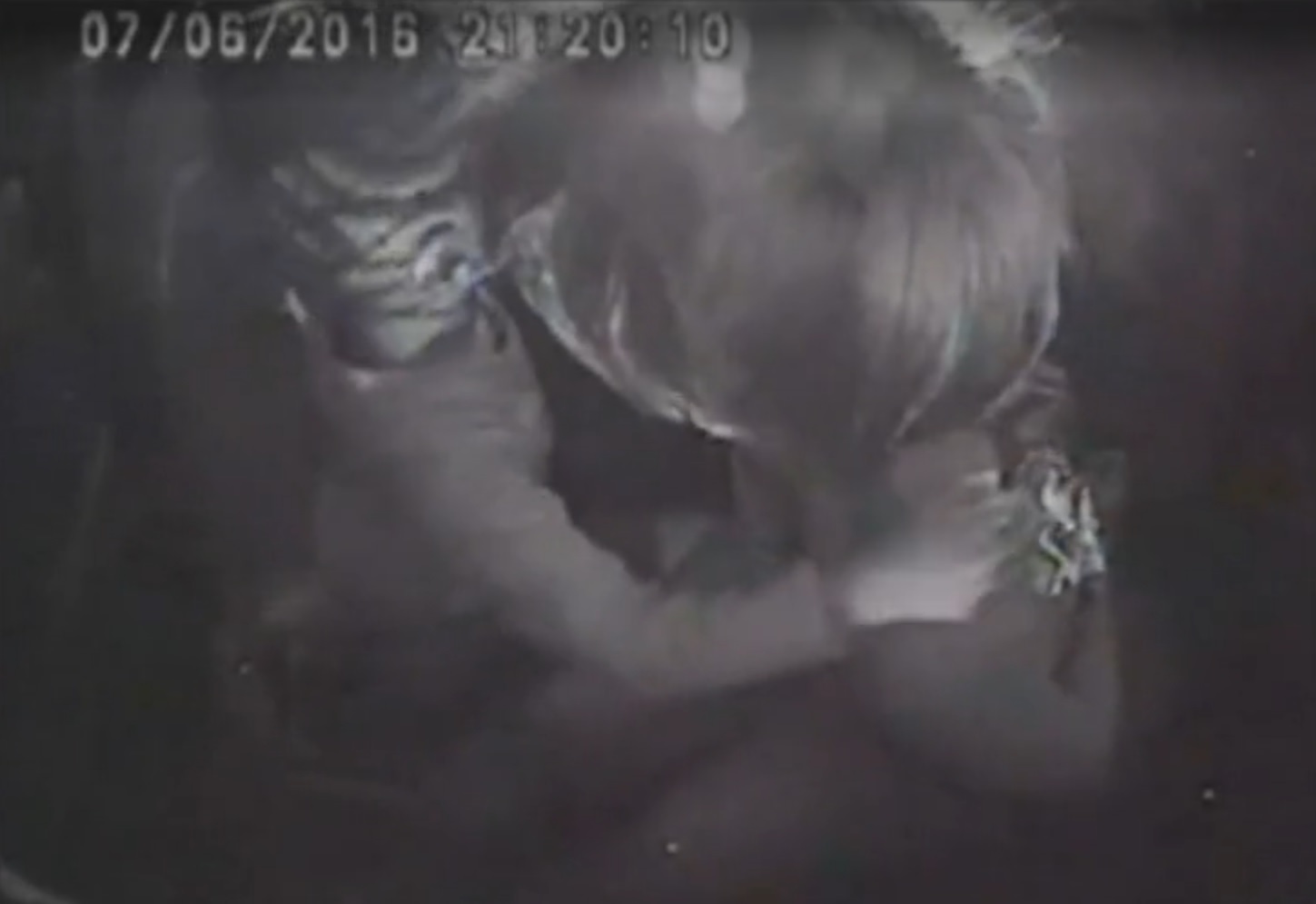
Fig. 3
Reynolds’ blackness forever reinforces her difference from idealized portrayals of white (married, middle-class) mothers, a difference that excludes her from the forms of compassion and deference that might otherwise be afforded to women with children.
This third still exemplifies the numerous moments in the video when the daughter hugs and kisses her mother; handcuffs keep Reynolds from reciprocating, and thus also from conforming to viewers’ expectations about performances of maternal care.
Since slavery, as black feminists have long noted, popular stereotypes have historically characterized African American women as either the asexual Mammy whose love and care is directed solely towards white families; Jezebel, the black harlot who seduces white men and thus can’t be raped; or Sapphire, the domineering and angry black woman who emasculates men. Nowhere is there room for the black mother who cares for her family. This history undoubtedly shapes viewers’ perceptions of what transpires in the back of the police car, where Reynolds and her daughter must navigate between the horror they have just witnessed and the need to keep the situation from further endangering their lives.
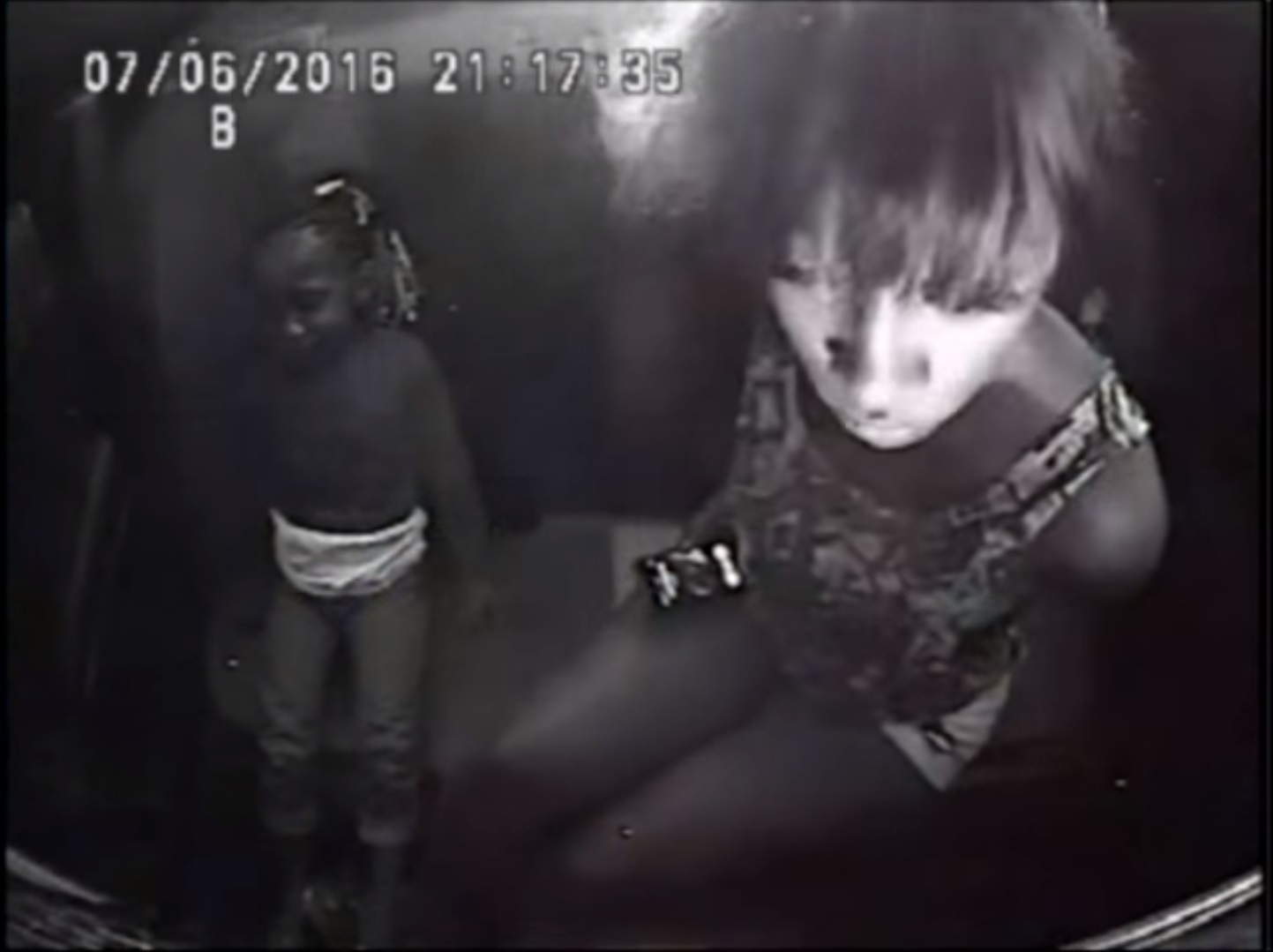
Fig. 4
Compared to the Facebook Live video in which Reynolds described the immediate aftermath of Castile’s shooting, the affects in the surveillance footage are muted overall. Early in the clip, she keens, she prays, she entreats her Facebook audience. Yet, her voice becomes level and respectful whenever she asks anything of the officer; he repeatedly answers by referring evasively to the imminent arrival of his supervisor.
This still visualizes the astonishing calm that pervades the police car, as Reynolds stares out the window and the daughter patiently sits back against the car seat. At one point, the young girl begins to sniffle, and Reynolds—gently, preoccupied—tells her, “Don’t cry, baby.” Her daughter complies almost immediately.
Even more haunting is Reynolds’s composed questioning of whether her boyfriend is dead. In the traumatized conditions of the killing’s aftermath, she is caught in an in-between world that demands her submission to the state’s deadly violence. She gives a deadpan answer when the officer asks her to confirm that neither she nor her daughter are hurt; she says that they’re physically fine, but “mentally, I’m scarred forever.” Through all of this, Reynolds must deal with logistics, as when she asks that the officer retrieve her phone charger or observes that she has to call Castile’s mother. At one point, she makes a one-handed phone call and we hear it go to voicemail. This instantly-recognizable robotic voice (“Your call has been forwarded …”) and familiar frustration are rendered surreal by the context in which they occur.
Omnipresent cameras—on cell phones, in surveillance systems, on police car dashboards, or the bodies of police officers themselves—have not appreciably changed the dynamics operative in these kinds of encounters. Indeed, despite the increase in the use of body cameras after Michael Brown’s killing in Ferguson, MO in August 2014, the New York Times reported that videos from body cams and cellphones do not seem to provide juries with sufficient evidence of guilt beyond a reasonable doubt.
Notwithstanding the promise of cameras to capture the incontrovertible truth of such situations, in practice, juries and lawmakers have often greeted such images skeptically. For example, the beating of Rodney King caught on camera was not enough to convince a jury of police brutality. This skepticism can be explained by widespread refusal to acknowledge the suffering of African-Americans or recognize it as lamentable.
Such disregard persists even in the face of graphic visual records, like the early-twentieth century postcards of lynchings or the open-casket photos of Emmett Till’s body. Black activists like Ida B. Wells and Mamie Bradley utilized images of lynching to denounce practices of racial domination secured by violence and murder; yet too often photos of racial violence lose their evidentiary power in confrontations with entrenched systems of white supremacy. Moreover, images of black deaths, which circulate routinely on social media today, can implicate viewers in a voyeuristic gaze at suffering and subordination.
Just as racial profiling precluded the police officer from seeing Castile as anything other than a criminal (in an audio recording one police officer comments that Castile “looks more like one of our suspects, just ’cause of the wide-set nose”), photographic evidence in jury trials does not guarantee clear sight. One common strategy for extracting the ‘truth’ from a moving image is to break it down into single-frame stills, a technique that promises to show how the action unfolded moment by moment. Selective freeze-framing, however, can as readily bolster defense arguments as support prosecution claims; this occurred in the Rodney King trial, and again most recently, in the June 2017 acquittal of police officer Dominique Heaggan-Brown, who shot and killed Sylville K. Smith last August.
Despite the problem of circulating images of black suffering and death, visual culture has long been vital to anti-racism activism, from anti-lynching campaigns to civil rights era protests of Jim Crow violence to Black Lives Matter. Reynolds herself recognizes the value of circulating images of racialized violence. In response to the release of the video, her lawyer, Larry Rogers, explained that she “had always wanted the world to see what happened to Philando, her and [her daughter].” Rogers further commented, “while the jury exonerated officer Yanez, I think the public sentiment is important. It’s important for the public to see exactly what he did to Philando. It’s important for the public to see the trauma he caused Diamond and her daughter.” But there is a conundrum here. This trauma is made visible for the public by the technologies of the state that caused it, sanctioning the violence against Castile and disregarding the suffering of the people who loved him. Footage like this provides essential visual documentation of this harm, but delivers it only through the voyeuristic and objectifying frame of the surveillance camera.
-By Wendy Kozol and Rebecca A. Adelman
Photos: Minnesota Bureau of Criminal Apprehension. Caption: Stills from video of Diamond Reynolds and her 4-year-old daughter as they sit in the back of a squad car shortly after the fatal shooting of Philando Castile. The video was captured on former St. Anthony police officer Jeronimo Yanez’s dash cam and was released on June 20, 2017, after he was found not guilty of second-degree manslaughter and dangerous discharge of a firearm.

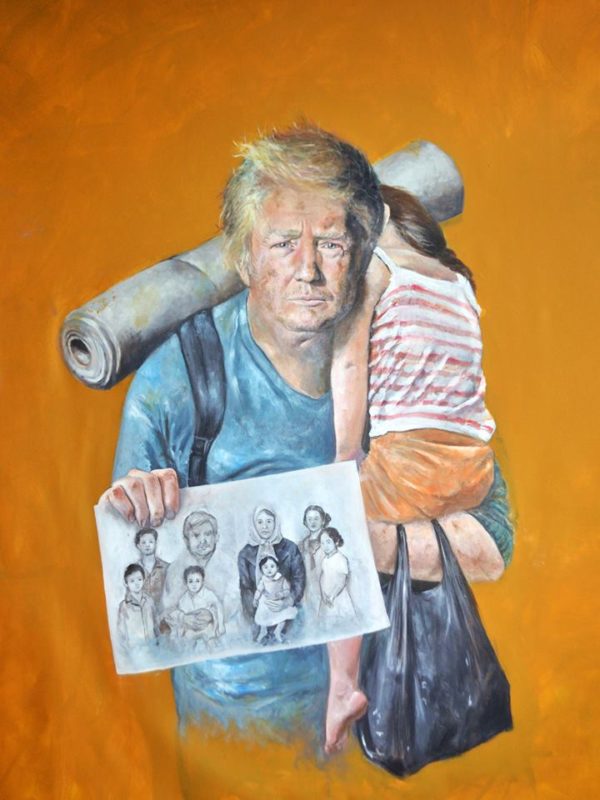
Reactions
Comments Powered by Disqus